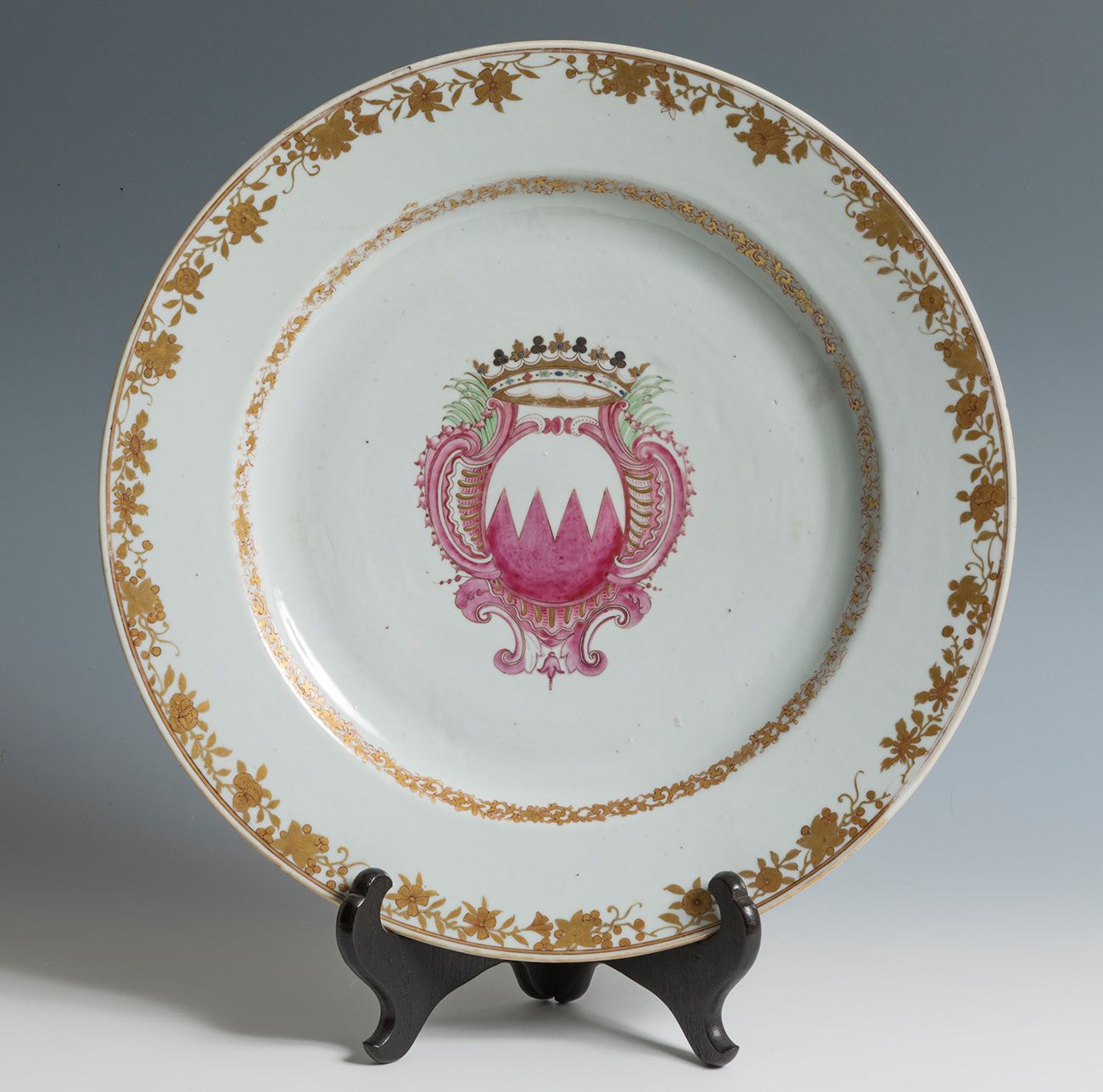Description
India Company Dish; China, Qing dynasty, Qianlong period, 18th c. Enamelled porcelain. With Cohen & Pearce label. Measurements: 36 cm. diameter. Qianlong period Chinese dish for the East India Company, made for the export market to Europe. Hence the coat of arms on the seat and the Western-inspired vegetal decoration. Around the seat, a garland of flowers decorates the eaves, and another garland of scrolls ornaments the cavetto. The Qianlong Emperor, a member of the Qing dynasty, ruled China from 1736 to 1795, and is remembered to this day as one of the most cultured emperors and one of the most important in terms of art collecting. His long reign was a particularly interesting moment in Chinese history. At that time, the country was the richest and most populous nation in the world. Qianlong was able to preserve and foster his own Manchu warrior and hunter traditions, and combine them with the adoption of Confucian principles of political and cultural leadership, thus achieving an effective and stable government. Indeed, it was his ability to adopt Chinese customs, while still honouring his Manchu tradition, that made him one of the most successful emperors of the Qing dynasty. Qianlong studied Chinese painting, and especially enjoyed the art of calligraphy, which was highly regarded in this culture, indeed conceived as the highest of the arts.
67
India Company Dish; China, Qing dynasty, Qianlong period, 18th c. Enamelled porcelain. With Cohen & Pearce label. Measurements: 36 cm. diameter. Qianlong period Chinese dish for the East India Company, made for the export market to Europe. Hence the coat of arms on the seat and the Western-inspired vegetal decoration. Around the seat, a garland of flowers decorates the eaves, and another garland of scrolls ornaments the cavetto. The Qianlong Emperor, a member of the Qing dynasty, ruled China from 1736 to 1795, and is remembered to this day as one of the most cultured emperors and one of the most important in terms of art collecting. His long reign was a particularly interesting moment in Chinese history. At that time, the country was the richest and most populous nation in the world. Qianlong was able to preserve and foster his own Manchu warrior and hunter traditions, and combine them with the adoption of Confucian principles of political and cultural leadership, thus achieving an effective and stable government. Indeed, it was his ability to adopt Chinese customs, while still honouring his Manchu tradition, that made him one of the most successful emperors of the Qing dynasty. Qianlong studied Chinese painting, and especially enjoyed the art of calligraphy, which was highly regarded in this culture, indeed conceived as the highest of the arts.
You may also like
